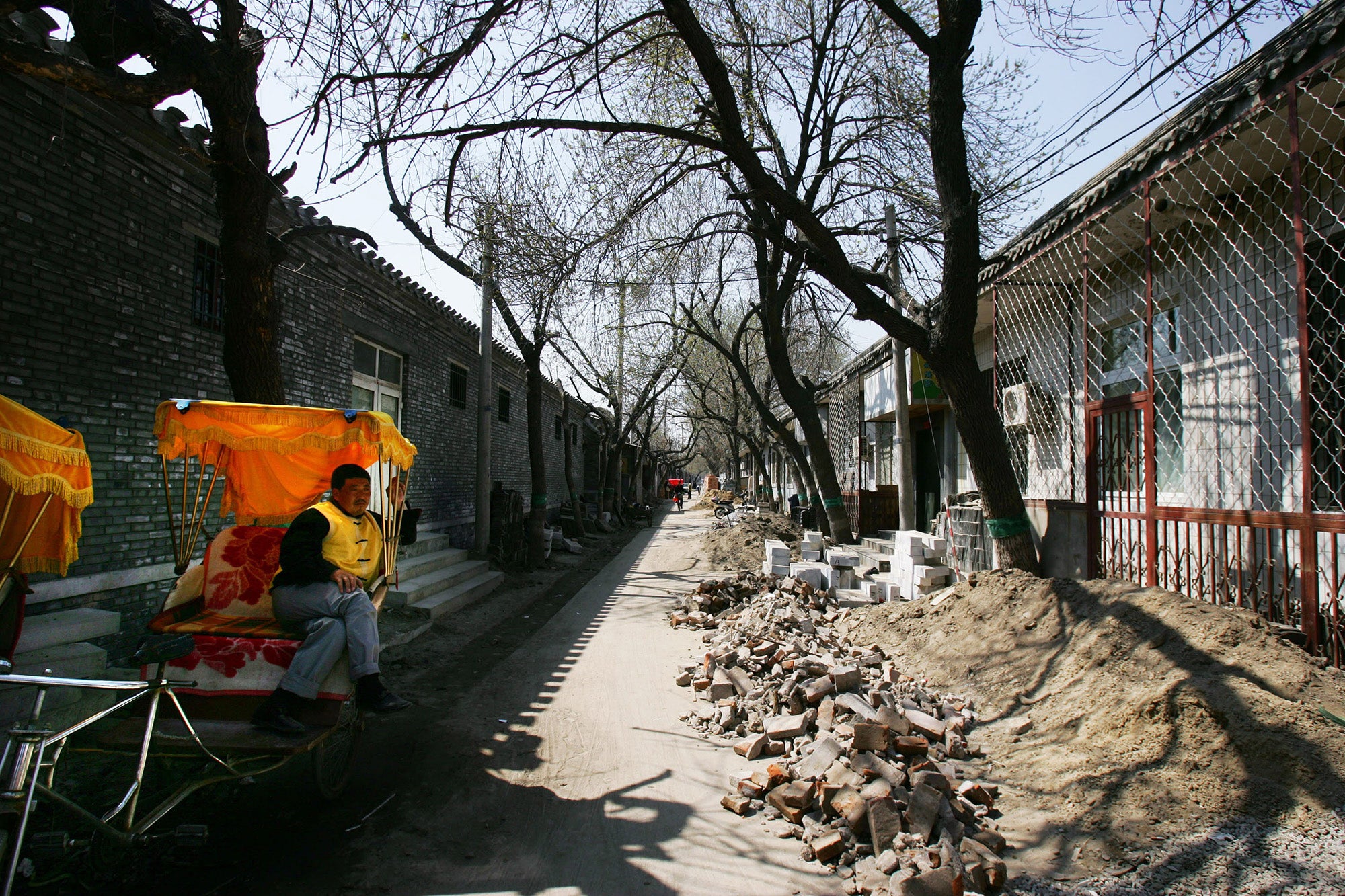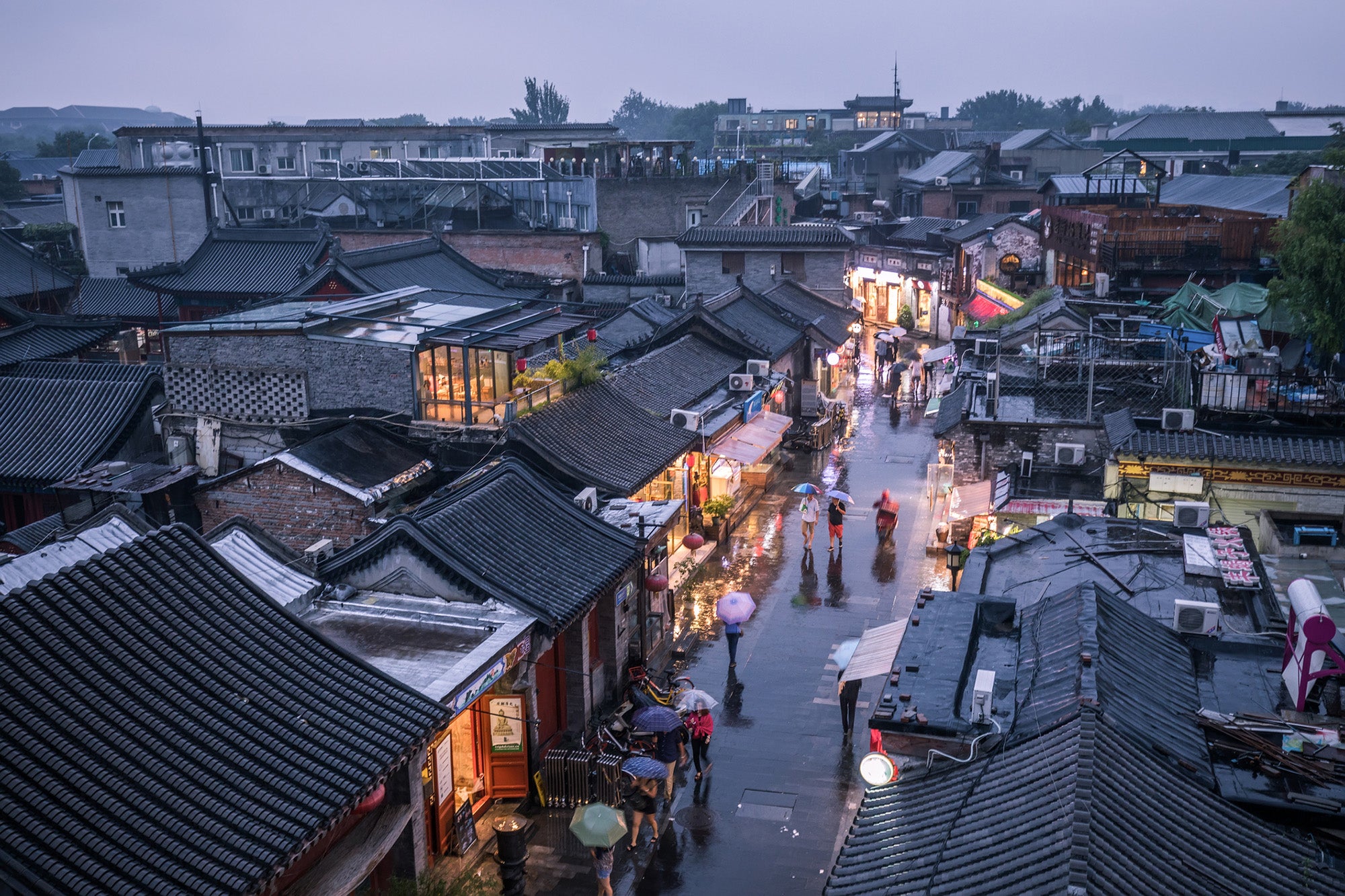The preservation of the built environment can be a challenge, especially when it requires balancing the demands of historic architecture with those of a rapidly modernizing city. How are the needs of a city’s residents addressed while maintaining traditional structures? What happens when the economic needs of a city aren’t being met through maintaining historic buildings?
Tourists returning to China after the last few years of pandemic restrictions may be excited by the juxtaposition of strolling through a hutong, with its small historic siheyuan homes, only to soon find themselves confronted with a shiny new example of contemporary architecture. The siheyuan, a traditional type of courtyard-based residential building has been a popular housing type in Beijing and the surrounding region for centuries. It’s the clustering of siheyuan that help make up the hutong neighborhoods with their iconic alleyways and small lanes. Today, while they make the perfect backdrop for vacation photos, they’re also a contentious issue for urban preservation in Beijing.
The economic boom in China at the end of the twentieth century saw many of these courtyard structures razed for new architectural developments. Even though the Beijing Urban Master Plan (2004–2020), initiated in March 2004, included guidelines to protect these historical neighborhoods, the protections haven’t always been followed. As urban planning scholar Mao Qizhi writes in his analysis of preservation in Beijing’s Old City,
Some preservation areas have failed to control, according to the demand for protection, new construction projects which follow the high intensity development pattern of the surrounding areas and focus on profit making, directly destroying the environment of the traditional hutong-courtyard space.
For every structure that was preserved, many more were torn down.

For residents living in these spaces, preservation presents a new sort of challenge. Architectural historian Donia Zhang explains that Beijing “endorsed the principle of large-scale inner-city regeneration to restore, rebuild and remodel dilapidated courtyard houses to their original state…establishing a code to ‘repair the old to appear old.’” The city did this with the intention to “not only to maintain the practical value of traditional courtyard houses, but also to reflect the old grace of Beijing.”
But when the city attempted to follow this code, it discovered a major problem with the existing structures: a lack of modern facilities, including connections to electricity, gas, and water. Zhang explains that a single water source, usually placed within the courtyard, was often shared by all the residents. And deferred maintenance meant that courtyard drainage pipes were blocked as well. The intent of the restoration work was to update the siheyuan with modern—and necessary—conveniences and modern building materials, while superficially keeping the historic vibe of the architecture.

Through interviews with residents of the restored siheyuan, Zhang shows that this process has had mixed results. One of her interviewees states:
The house is better after renewal, but the living space has not been increased. The courtyard has become smaller and unsafe; it will be dangerous in case of fire or emergency. This should no longer be called a “courtyard” but rather “courthouse” because there is no yard anymore.
This result is a symptom of what political scientist Yue Zhang describes as symbolic urban preservation, where selective architectural preservation is used to highlight token projects while the majority of historic areas are torn down to make way for new developments that will have a positive economic return. She explains that this “symbolic urban preservation heavily relies on methods like restoration and façade protection, which highlight selective elements of the structures but challenge their overall authenticity.” While the restoration work may have updated the structures to appear to be a better quality, concerns about living conditions often remained unaddressed. Zhang further explains that these symbolic preservation moments often focused on the economic potential of the area—encouraging them to become tourist destinations—as opposed to considering the needs of long-term residents.
Weekly Newsletter
Mao Qizhi shares in his research a more organized path forward in preserving historic neighborhoods in Beijing’s Old City, arguing that future “renovation projects must be in harmony with the surrounding environment.” This means taking a more systematic approach to urban preservation by identifying key areas in need of restoration work while incorporating their preservation into the discussion of larger land-use and planning changes. This holistic method could allow for additional urban development while preserving historic neighborhoods as important cultural pieces of Beijing.







